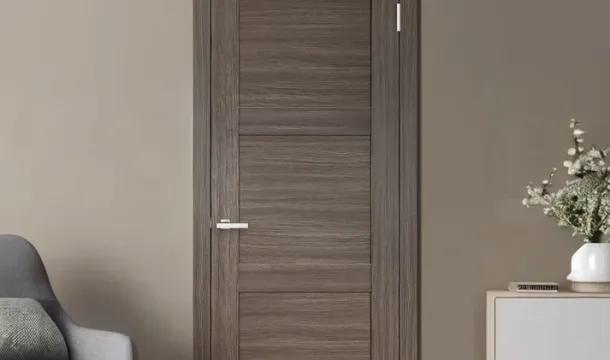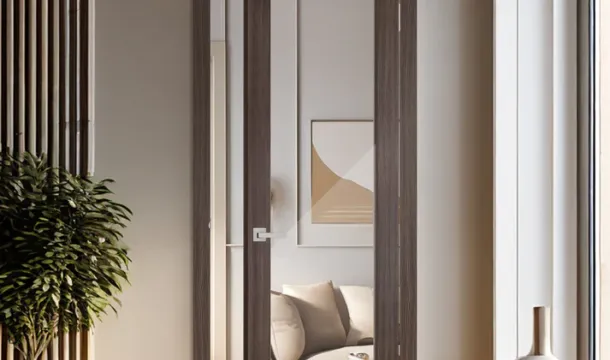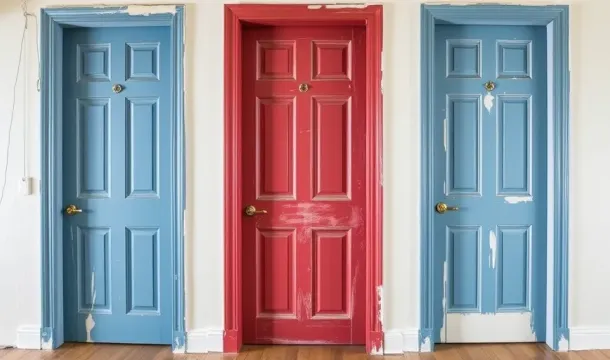Key Facts Homeowners Need About Door Warranties
Popular Articles
- Choosing the Perfect Interior Doors for Your Canadian Home
- A Complete Guide to Choosing Interior Doors for Canadian Homes
- The Challenges of Painting Interior Doors
- Understanding Interior Doors and Their Role in Your Home
- The Perfect Blend of Reliability and Design: Interior Doors with Italian "Sandwich" Technology
Always verify the exact coverage period and conditions outlined in the guarantee before purchasing an entry system. Many manufacturers provide limited protection ranging from one to ten years, but these often exclude hardware components or labor costs. Clarifying what defects or damages are covered prevents unexpected expenses down the line.
Material type and finish significantly influence the scope of protection offered. For instance, solid wood units typically come with shorter guarantees compared to steel or fiberglass models due to their susceptibility to warping or moisture damage. Confirm if environmental factors like humidity or temperature fluctuations affect the validity of your protection plan.
Transferability is another factor that adds value to your investment. Some warranties remain valid if ownership changes, which can enhance resale appeal. However, many contracts require registration within a specific timeframe post-installationmissing this step could void coverage entirely.
Pay attention to maintenance requirements stated in the guarantee documentation. Failure to perform routine upkeep such as sealing, painting, or lubricating moving parts might nullify claims related to wear or malfunction. Keeping detailed records of maintenance activities supports any future requests for repairs under the guarantee.
Comparing offers from multiple suppliers helps identify differences not only in duration but also in service quality and customer support responsiveness during claim processes. Prioritize providers that clearly communicate terms and assist promptly when issues arise, ensuring peace of mind alongside product reliability.
Coverage Limitations Explained
Guarantees often exclude damage caused by improper installation, neglect, or natural wear and tear. Pay close attention to clauses specifying what triggers voiding the coveragecommon exclusions include water damage from flooding, exposure to extreme temperatures, and accidental impacts.
Most manufacturers limit guarantees to specific components such as hardware or finishes rather than the entire door unit. For example, a finish guarantee might last 5 years while structural elements have 10-year protection. Verify these distinctions before making a purchase decision.
Material-Specific Restrictions
Wood doors typically come with coverage that excludes warping or cracking resulting from humidity fluctuations or lack of maintenance. Fiberglass and steel options may have better resistance but often exclude surface dents or scratches caused during transport or use.
Transferability and Claim Procedures
Guarantees may only apply to the original purchaser and require registration within a certain timeframe. Some warranties demand professional inspection prior to any repairs for claims to remain valid. Missing documentation or unauthorized modifications can nullify coverage instantly.
Claim Process Step-by-Step
Verify your guarantee details immediately. Locate the original documentation or digital copy that outlines the coverage terms, claim period, and any specific conditions. This step ensures you meet all eligibility requirements before proceeding.
Document the issue thoroughly. Capture high-resolution photos from multiple angles showing defects or damage. Include close-ups and wider shots to provide context. Detailed descriptions complement visual evidence and strengthen your case.
Contact the manufacturer or authorized dealer without delay. Use the official communication channels specified in your guarantee paperworkphone numbers, email addresses, or online portals. Clearly state the problem and reference your guarantee number if applicable.
Submit a formal claim following provided instructions. Complete required forms accurately, attaching all supporting materials such as purchase receipts, installation records, and images. Incomplete submissions may delay processing or result in rejection.
Schedule an inspection if requested. Some guarantees require an expert assessment before approval. Coordinate promptly to avoid missing deadlines outlined in your agreement.
Maintain correspondence records throughout the process. Save emails, messages, and notes from phone calls. These documents help resolve disputes and confirm compliance with procedural steps dictated by the guarantee.
Expect a response timeframe typically ranging from two to six weeks depending on the provider's policies.
If approved, review repair or replacement options carefully. Understand whether costs are covered fully under the guarantee or if partial expenses fall on you. Clarify timelines for completion to minimize inconvenience at home.
If declined, request a detailed explanation in writing. This allows evaluation of possible next steps such as appeal processes or third-party mediation services offered by consumer protection agencies in Canada.
Common Warranty Exclusions
Check warranty documents closely for exclusions that often void the guarantee. Damage caused by improper installation, including warping from incorrect framing or hardware attachment, is typically excluded. Manufacturers rarely cover issues arising from neglect, such as failure to maintain finishes or clean regularly.
Environmental factors like water damage, exposure to extreme temperatures, or UV rays usually fall outside coverage. For example, doors installed in high-humidity areas without proper sealing frequently lose warranty protection.
Alterations made after purchaseincluding painting, staining, or modifying door componentscan nullify guarantees. Any repairs done by unauthorized technicians often lead to denied claims as well.
Wear and tear resulting from normal use, accidental impacts, scratches, or dents are generally excluded. Cosmetic defects visible at the time of delivery but reported late may also be disqualified.
Electronic components such as smart locks or integrated sensors may have separate warranties; damage due to power surges or user error is commonly not covered under the primary door guarantee.
Warranty Transferability Rules
Verify the transferability of your door guarantee before purchase, as many manufacturers restrict coverage to the original buyer only. Non-transferable warranties lose validity once ownership changes, which may impact resale value.
Common transfer conditions include:
- Time Limits: Some guarantees allow transfer within a specific period after sale, often 30 to 90 days.
- Documentation: Proof of purchase and a formal transfer request are usually mandatory.
- Transfer Fees: Certain brands charge a fee to process warranty reassignment.
Failing to comply with these rules can void coverage entirely, so retain all receipts and correspondence related to your door's guarantee. If planning to sell your property, confirm whether the door's warranty enhances appeal by transferring seamlessly.
Tips for Ensuring Smooth Warranty Transfers
- Contact the manufacturer promptly after ownership change to initiate the transfer process.
- Keep detailed records of maintenance and repairs; some guarantees require ongoing care compliance for validity post-transfer.
- Review warranty terms for exclusions that may apply exclusively after transfer, such as limitations on cosmetic defects or labor costs.
A transferable guarantee adds tangible value by protecting subsequent owners and minimizing unexpected repair expenses. Always prioritize models with clear, flexible warranty assignment provisions when selecting interior doors for Canadian homes or renovations.
Popular Articles
- Choosing the Perfect Interior Doors for Your Canadian Home
- A Complete Guide to Choosing Interior Doors for Canadian Homes
- The Challenges of Painting Interior Doors
- Understanding Interior Doors and Their Role in Your Home
- The Perfect Blend of Reliability and Design: Interior Doors with Italian "Sandwich" Technology

Choosing the Perfect Interior Doors for Your Canadian Home

A Complete Guide to Choosing Interior Doors for Canadian Homes
